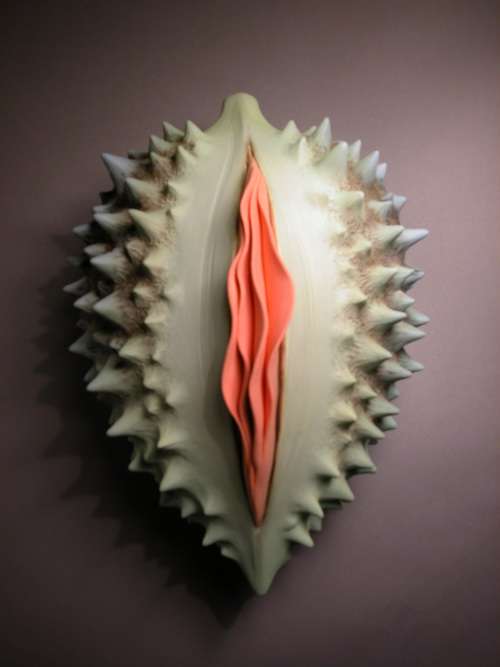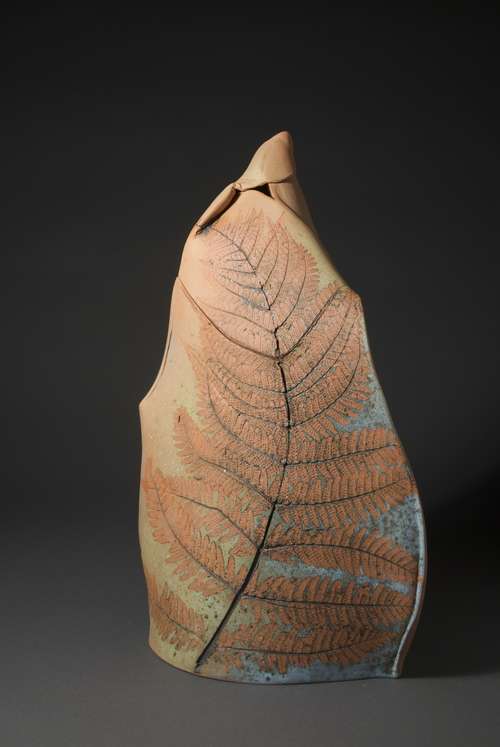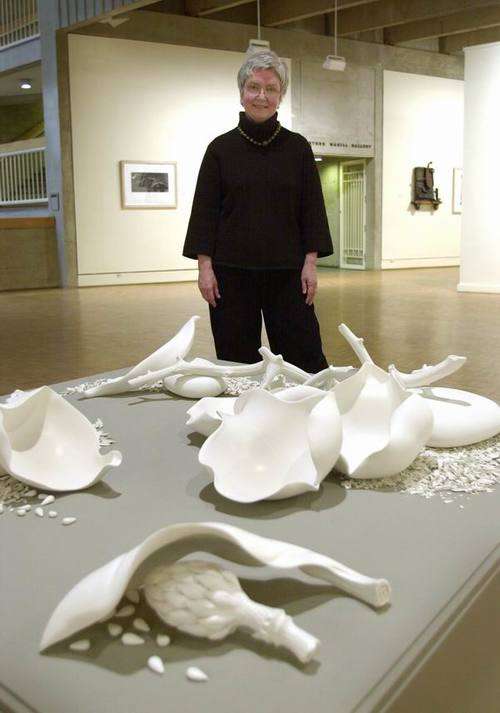

I remember once in the history of modern art the teacher said: "female art is actually a false proposition, because you can't tell the gender from these paintings at all. I think the teacher is right. At least I can't tell from the works of the modern artists shown in the slides which are the works of the male painters and which are the works of the female painters. And in the process of appreciating art, I never care about the gender of the artist. Art is art. Why should there be gender distinctions? But interestingly, I found that most of the works that evoked the emotions in my heart were by women artists. It's just that the works that are really called "female art" often make me feel a kind of masculine aggression.
In fact, I never deliberately thought about what "female art" was until I met Alice Ballard's ceramic works, and the first word that came to my mind was "female art". What I like about her work is that she neither joins the trend of exploring artistic boundaries, nor is she eager to express her gender identity. But you can really feel the beauty of the gradual transformation of nature in art from her works, as well as a unique tolerance and compassion of women.
Wall Pod Series





Inspiration is a very mysterious thing, you never know when it will appear, but when it does, it can have an incredible effect. Even Alice Ballard could not have imagined that a tiny seed shell could give her a steady stream of inspiration. The prototype of the wall pod series is actually the seed shell of the royal paulownia tree. This kind of tree is almost everywhere in China, and is often used as decoration on both sides of streets. Especially in May, when the wisteria blossoms, it's spectacular.

Paulownia and Paulownia pods
Alice's first encounter with Royal Paulownia was at a famous pottery centre in Asheville. She picked a branch full of shells and brought it back to her studio, where the heart-shaped shell began to "beat" with her love of nature. Alice says she likes the heart-shaped shell because it's reminiscent of the womb, where power resides and where creativity resides. In the "wall pod series", Alice does prove to us the richness and the powerful enveloping power of the "pod shell" in the form of vision.
White Works Series





There is a moving story behind these white works. In 1980, before she began the series, her mother was diagnosed with incurable lung cancer. The whole family was gripped by the prospect of losing their mother at any moment. It was then that she found a tulip bulb under the sink in her studio. Because I forgot to plant them in time, the bulbs took root and sprouted in the dark bag...The bright and beautiful white plants look particularly attractive in the dark. Alice Ballard's resilience was like a shot in the arm. As a determined optimist, Alice thinks that all these are symbols of hope, because these white spheres suggest the cycle of life, and autumn is buried in the ground and spring can harvest a thriving hope. Since everyone has to face the problem of life and death, why can't we turn fear into power?
Since then, she has been working on the "White Series". Perhaps her strength and optimism really did light the light of hope, and her mother lived for another 14 years. And tulips later became her mother's favorite flower because of the bulbs. Alice, though, does create other color collections that are more textured. However the "White Collection" has been with her throughout her creative life, because it is here that she has found "hope".
Garden Impression Series

Some people like to collect watches, some people like to collect stamps, some people like to collect insect specimens, and Alice Ballard likes to collect flowers and plants, and she likes to collect nature. In her "Garden Impressions" series, she presents a variety of plants and flowers with different characteristics at different stages of the year. What's more interesting is that many of the plants were donated by friends and turned into works of art to commemorate these special friendships. Red clay and iron-rich terracotta are two of the clays Alice uses in this series. Before the creation of flowers and plants, first make the clay embryos by rolling method, and then go to the garden to collect all kinds of favorite materials for creation. This is the most enjoyable part, and finally gently press the designed flowers and plants on the clay embryos.
These containers can be used as stand-alone sculptures or as containers for various plants and stones. I think there is no better vessel to hold nature than "nature".





I think the reason why "female art" is put forward is that the absence of a large number of female artists in the history of art reveals an unfair fact that the people who write the history of art are all men, which is undoubtedly a great loss for the history of art. This kind of one-dimensional aesthetic taste virtually obscures the beauty from another perspective, and the study of "female art" is trying to make up for this gap. However, once any kind of artistic creation deliberately emphasizes a certain attribute, it will be suspected of "pseudo art". This may explain why "women's art" has both a sense of existence and, at the same time, opposition.
I'm not a "woman in art" researcher, but as a woman working in art, I hope to see more artists like Alice Ballard emerge. Because in such a fickle and anxious world, we need more "gentle power" to let us return to nature, return to inspiration.

Alice Ballard